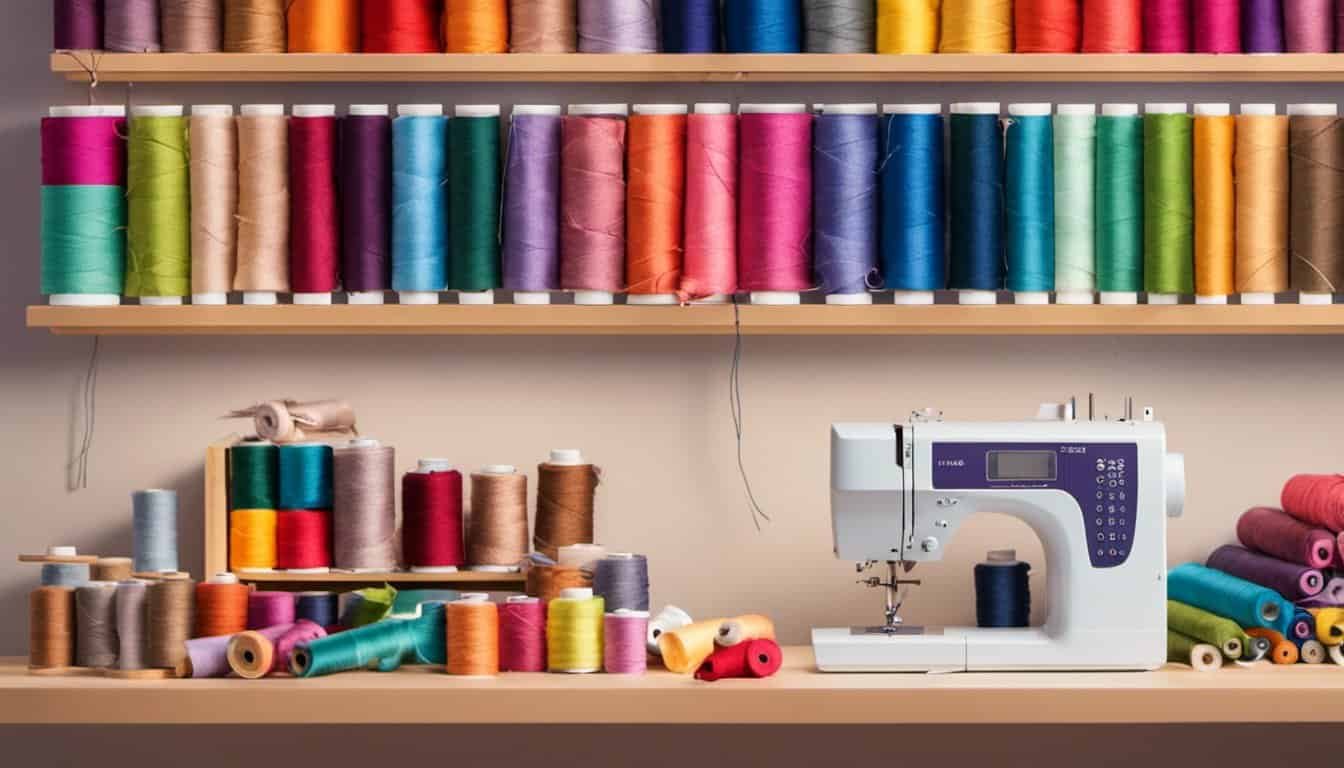Keep your workspace peaceful by tackling machine noise head-on. Loud machinery can disrupt productivity and even strain your ears. With the right maintenance strategies, you can reduce unwanted sounds and keep your equipment running smoothly.
From regular inspections to proper lubrication, simple steps make a big difference. You’ll discover how proactive care not only quiets your machines but also extends their lifespan. Say goodbye to constant clatter and hello to a more efficient and comfortable working environment.
Understanding Machine Noise
Machine noise impacts the efficiency and comfort of your crafting space. Recognizing the sources helps you tackle noise effectively. Common contributors to machine noise include:
- Lubrication Issues: Insufficient lubrication leads to grinding or squeaking sounds.
- Worn Parts: Damaged belts, gears, or bearings cause rattling or knocking noises.
- Misalignment: Misaligned components create vibrating or humming sounds.
- Loose Fasteners: Unsecured screws and bolts result in buzzing or rattling noises.
- Electrical Problems: Faulty motors or wiring generate humming or crackling sounds.
Identifying these noise sources enables you to perform targeted maintenance, ensuring your crafting machines run smoothly and quietly.
Common Causes Of Machine Noise
Understanding what causes your crafting machine to make noise helps you address issues effectively. Identifying these common culprits ensures smoother and quieter operation.
Worn Bearings
Worn bearings reduce smooth motion, leading to grinding or squeaking sounds. Regularly inspect bearings for wear and replace them if you notice excessive noise or vibration. Keeping bearings lubricated prevents premature wear and maintains quiet performance.
Loose Components
Loose screws, bolts, or parts can cause rattling or clanking noises. Periodically tighten all fasteners and check for any parts that may have shifted during use. Ensuring that components are securely fastened minimizes noise and enhances machine stability.
Preventive Maintenance Practices
Implementing preventive maintenance keeps your crafting machines running smoothly and quietly. Follow these key practices to minimize noise and extend equipment life.
Regular Lubrication
Lubricate your machines every 100 hours of use or monthly, whichever comes first. Apply manufacturer-recommended oils to moving parts like gears, bearings, and belts. Proper lubrication reduces friction, preventing grinding and squeaking noises. Check oil levels regularly and replace dirty lubricant to maintain optimal performance.
Tightening Fasteners
Inspect and tighten all screws, bolts, and other fasteners every 50 hours of operation or biweekly. Loose components can cause rattling and vibration, increasing noise levels. Use appropriate tools to ensure fasteners are secure without over-tightening, which can damage parts. Regularly tightening fasteners enhances machine stability and decreases unwanted sounds.
Troubleshooting Noisy Machines
Addressing machine noise promptly ensures smooth and efficient operation. Follow these steps to identify and fix common noise issues in your crafting equipment.
Identifying The Source
Begin by isolating the noise to a specific area. Listen for grinding, squeaking, or rattling sounds. Common sources include:
- Worn Bearings: Look for signs of wear or damage in the bearings. Grinding noises often indicate the need for replacement.
- Loose Fasteners: Check screws, bolts, and other fasteners. Loose parts can cause rattling and vibration.
- Misaligned Components: Ensure all parts are properly aligned. Misalignment can lead to increased friction and noise.
- Lubrication Issues: Inspect lubrication points for dry or insufficient oil. Lack of lubrication increases friction and noise levels.
- Electrical Problems: Listen for buzzing or humming from electrical components, which may indicate wiring issues or failing motors.
Implementing Repairs
Once you’ve identified the noise source, perform the necessary repairs to restore quiet operation:
- Replace Worn Bearings: Remove and replace damaged bearings with manufacturer-approved parts to eliminate grinding sounds.
- Tighten Fasteners: Use appropriate tools to securely tighten all screws, bolts, and other fasteners, reducing rattling and enhancing stability.
- Realign Components: Adjust and realign any misaligned parts according to the machine’s specifications to minimize friction and noise.
- Lubricate Moving Parts: Apply the recommended lubricant to all moving parts every 100 hours of use or monthly. Proper lubrication reduces friction and prevents noise.
- Address Electrical Issues: Inspect and repair any faulty wiring or electrical components. Replace malfunctioning motors or parts to stop buzzing or humming noises.
Implement these repairs promptly to maintain a quiet and efficient crafting environment.

Tools And Equipment For Maintenance
Maintaining your crafting machines requires the right tools and equipment to ensure efficient noise reduction. Here’s a list of essential items you’ll need:
Basic Hand Tools
- Screwdrivers: Use flathead and Phillips types to tighten or loosen screws and fasteners.
- Wrenches: Adjustable and fixed wrenches help secure bolts and nuts, preventing rattles.
- Pliers: Ideal for gripping, bending, and adjusting components during maintenance.
Lubrication Supplies
- Lubricating Oils: Choose manufacturer-recommended oils to reduce friction in moving parts.
- Grease Guns: Apply precise amounts of grease to bearings and joints to minimize noise.
- Cleaning Rags: Wipe away excess lubricant to prevent buildup and maintain machine cleanliness.
Diagnostic Tools
- Vibration Meters: Measure machine vibrations to identify misalignments or worn parts.
- Sound Level Meters: Quantify noise levels, helping you track the effectiveness of maintenance efforts.
- Flashlights: Illuminate tight or dark areas, making it easier to inspect and repair components.
Replacement Parts
- Bearings: Stock spare bearings to replace worn ones that cause grinding or squeaking noises.
- Fasteners: Keep extra screws, bolts, and nuts on hand to ensure all components remain secure.
- Belts and Pulleys: Replace worn belts and pulleys to maintain smooth and quiet machine operation.
Cleaning Tools
- Compressed Air: Remove dust and debris from inside the machine, preventing buildup that can cause noise.
- Brushes: Use various brush sizes to clean intricate parts and hard-to-reach areas effectively.
- Vacuum Cleaners: Safely extract larger particles and maintain a clean working environment.
Alignment and Calibration Tools
- Alignment Tools: Ensure machine components are properly aligned to prevent vibrations and noise.
- Calibrators: Maintain accurate machine settings, reducing operational noise and improving performance.
- Leveling Tools: Use spirit levels to keep machines stable and minimize movement-related sounds.
Safety Equipment
- Gloves: Protect your hands while performing maintenance tasks.
- Safety Glasses: Shield your eyes from debris and lubricant splashes during repairs.
- Ear Protection: Wear earplugs or earmuffs when working with noisy machinery to protect your hearing.
Storage Solutions
- Toolboxes: Organize and store your maintenance tools efficiently for easy access.
- Parts Organizers: Keep replacement parts sorted and readily available for quick repairs.
- Labeling Supplies: Use labels to identify tools and parts, streamlining your maintenance process.
Having these tools and equipment on hand simplifies the maintenance process, allowing you to address noise issues promptly and keep your crafting machines running smoothly and quietly.
Best Practices For Reducing Machine Noise
Implement effective strategies to minimize machine noise and enhance performance. Follow these practices to maintain a quiet workspace:
- Lubricate Moving Parts Regularly
Apply manufacturer-recommended lubricants every 100 hours of operation or monthly. Lubrication reduces friction, preventing squeaks and grinding sounds.
- Tighten Fasteners Periodically
Inspect and secure screws, bolts, and other fasteners every 50 hours or biweekly. Tight fasteners eliminate rattling noises and enhance machine stability.
- Align Components Accurately
« 10 Shocking Ways the Industrial Revolution Impacted Sewing
Best Irons for Sewing: Steam vs. Dry Options – The Ultimate Showdown Revealed »
Verify component alignment during each maintenance cycle. Misaligned parts increase vibration and noise, disrupting workflow.
- Replace Worn Bearings Promptly
Identify and substitute worn bearings upon detecting grinding or squeaking. New bearings ensure smooth operation and quiet performance.
- Install Sound Dampening Materials
Attach soundproofing materials to machine housings if noise persists after maintenance. Dampening materials absorb residual sounds, reducing overall noise levels.
- Use Vibration Pads Under Machines
Position vibration-absorbing pads beneath machinery to decrease transmission of vibrations to surfaces. Pads minimize noise caused by machine movement.
- Conduct Regular Inspections
Schedule comprehensive inspections at least once a month. Early detection of issues prevents noise escalation and maintains optimal machine functionality.

Conclusion
Keeping your machines running smoothly and quietly is within your reach. By staying on top of regular maintenance and addressing issues as they arise you can create a more comfortable and productive workspace. Embracing these simple habits not only protects your equipment but also enhances your daily operations. Take charge of your maintenance routine and enjoy the benefits of a quieter and more efficient environment. Your workspace will thank you.

















